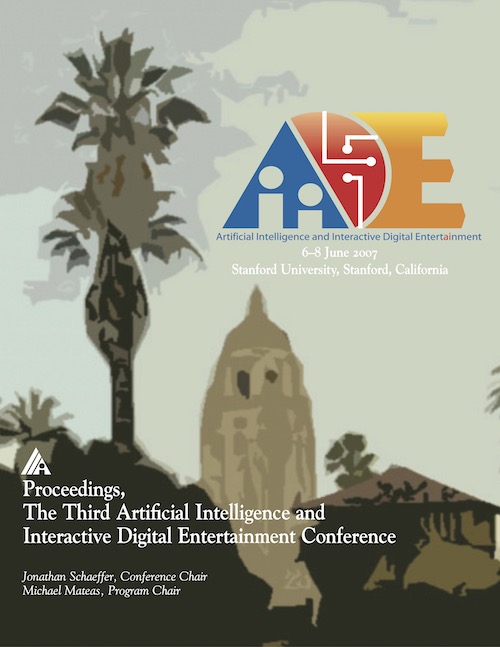Wubble World
DOI:
https://doi.org/10.1609/aiide.v3i1.18776Abstract
We introduce Wubble World, a virtual environment for learning situated language. In Wubble World children create avatars, called wubbles, which can interact with other other children's avatars through free-form spontaneous play or structured language games. Wubbles can also learn language from direct interaction with children, since the system uses principles from developmental psychology to restrict the complexity of this learning task: a shared attention model that includes deictic pointing, and a concept acquisition system that allows for rapid learning of new words from a limited number of exposures.
Since we have complete knowledge of the state and structure of the virtual environment, we are able to track correspondences between utterances and the scene in which they are uttered. This sentence/scene corpus will be a valuable resource as we attempt to tackle more sophisticated language learning tasks, such as the acquisition of syntax and verb semantics from world dynamics.

